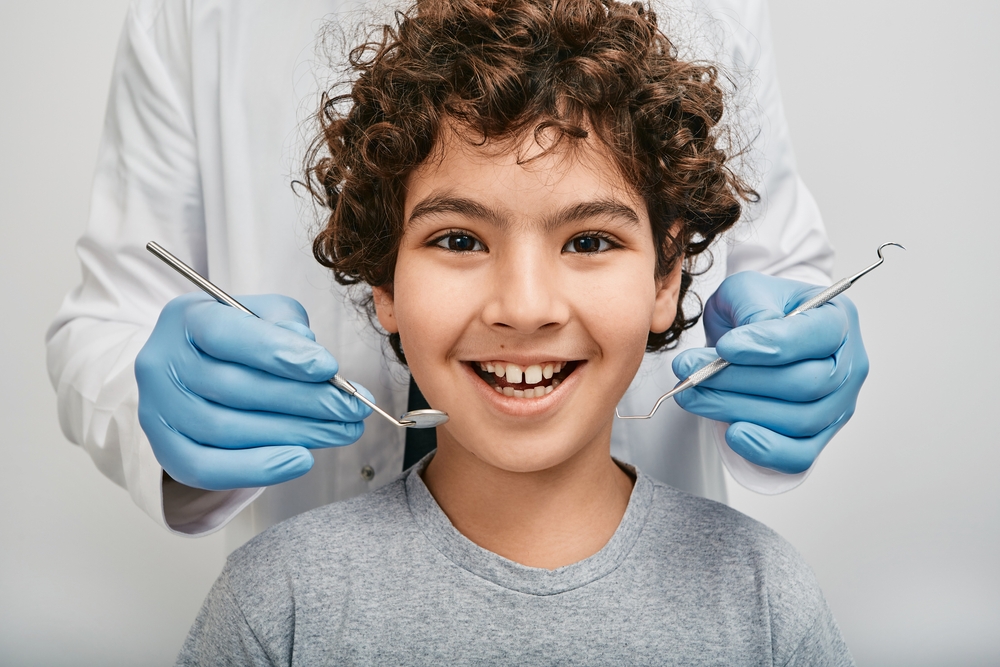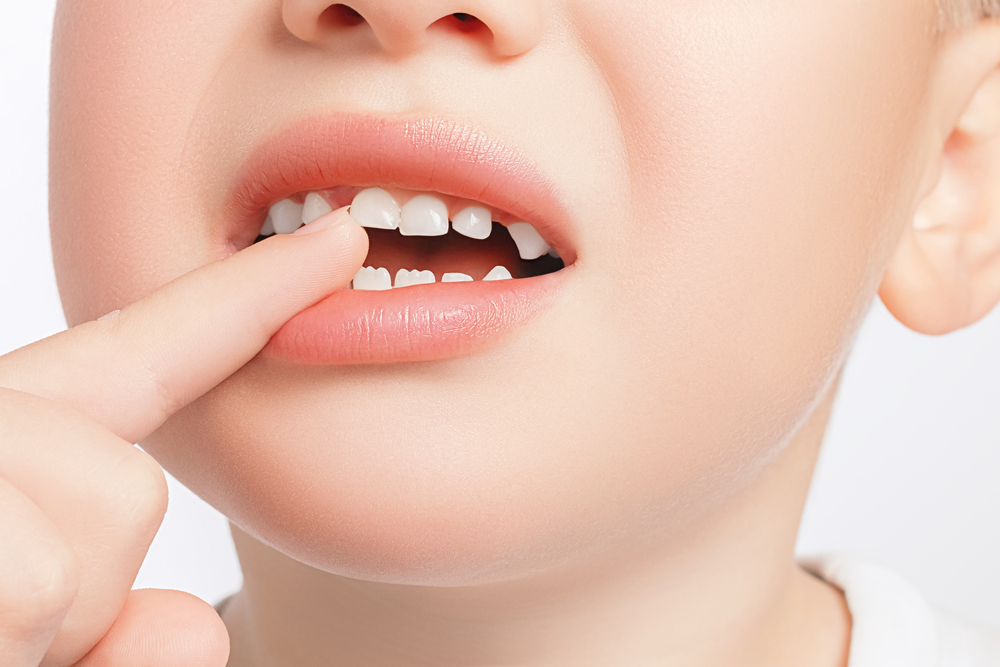

“My child’s tooth is loose but won’t come out.” “My child’s baby tooth is not falling out or getting loose at all.” These are some of the concerns that parents bring up with our Naperville pediatric dentist. While it can be tempting to take matters into your own hands and try to pull a stubborn baby tooth, that’s not usually the best course of action.
The team at Innovative Pediatric Dentistry will be sharing some insight when we cover:
- When do kids start losing teeth?
- Why would a baby tooth not come out?
- What to do if a child’s tooth is loose but won’t come out
- What to do if baby teeth are not falling out at all
When do kids start losing teeth?
The average age for a child to lose their first tooth is between 6 and 7. Kids will continue losing baby teeth until around age 12. That said, these are just averages. Some kids start losing baby teeth a little earlier or later. Usually, this is nothing to worry about.
However, if a baby tooth falls out before age 5 or no teeth have fallen out after age 7, it is something to bring up with your pediatric dentist. Losing baby teeth prematurely or very late can sometimes result in orthodontic issues.
Why would a baby tooth not come out?
If a baby tooth won’t come out, it could be because:
- It’s not ready. If it’s around the time a baby tooth is supposed to fall out but it’s not wiggly yet or your child’s tooth is loose but won’t come out, most often, it means it’s not ready. The underlying permanent tooth pushes against the root of the baby tooth, causing the root to dissolve. When this happens, the tooth loosens and falls out. Sometimes this process can take a little while.
- Your kiddo is between ages 8 and 10. Once kids start losing baby teeth, it can seem like the Tooth Fairy is visiting every other day. In fact, the average 8 year old will have lost 8 teeth. While the process starts off fast and furious, it slows down between ages 8 and 10. This lull is normal. Around age 10, kids will lose teeth more frequently again.
- There isn’t enough room for the permanent tooth because of moderate to severe crowding. The permanent teeth are larger than the primary teeth. If your child’s baby teeth were crowded or they have extra teeth, it can indicate that the situation will get worse as their permanent teeth start to erupt. With moderate to severe crowding, sometimes, there isn’t enough space for the permanent teeth to erupt properly. If they come in sideways or become impacted, they’re not able to push out the baby teeth.
- Your child has “shark teeth.” If your child’s baby teeth are not falling out and new teeth are coming in, it can be alarming. But this condition, nicknamed “shark teeth,” because sharks have several rows of teeth, is actually fairly common. It can happen if a permanent tooth pushes through in front of, or more commonly, behind a primary tooth. Since it misses the tooth’s root and doesn’t cause it to dissolve, your child’s baby tooth won’t come out. Instead, they’ll temporarily have two rows of teeth.
- Rarely, the permanent tooth below the baby tooth failed to develop. Congenitally missing teeth are rare, but do happen. This is when the permanent tooth that should be underlying the baby tooth doesn’t develop. With no permanent tooth to push it out, the baby tooth can stay in place indefinitely.
What to do if a child’s tooth is loose but won’t come out
Should you pull a loose baby tooth? No. It’s best to let the tooth fall out naturally. When a child’s tooth is loose but won’t come out, in all likelihood, it’s just not ready. Pulling a baby tooth prematurely can be painful and cause damage.
Instead, have your child use their tongue to wiggle their baby tooth as much as possible. You can also encourage them to eat things like raw apples and carrots, which will hasten the process along. Eventually, the tooth will detach on its own and fall out.
If the tooth is extremely loose and after two weeks of wiggling is still refusing to budge, call your pediatric dentist. We can assess the situation and let you know if you should give the tooth more time or if it needs help from the dentist. If the tooth does need to be removed, our pediatric dentist can do it quickly, painlessly and safely.
What to do if the baby teeth are not falling out at all
What happens if the baby teeth don’t fall out? It depends. Often, given time, the teeth will eventually shed. Even in the case of those shark teeth we talked about, after the permanent tooth comes in behind the baby tooth, the baby tooth will still usually fall out on its own; it just may take longer.
If a child’s baby teeth are not falling out and we don’t see any visible reason why, our pediatric dentist might take digital x-rays. An x-ray can show us if tooth loss is delayed by severe crowding, a missing permanent tooth or extra teeth blocking the eruption of permanent teeth. This will let us determine if it’s necessary to extract the baby tooth.
Another important thing to note is that one of the reasons it’s recommended that kids have their first orthodontic evaluation by age 7 is because the orthodontist will evaluate their growth and development and identify issues with the loss or eruption of teeth.
Some kids can benefit from early orthodontic treatment to guide jaw growth and alleviate crowding. This may help the permanent teeth come in properly, which will also ensure the baby teeth fall out. The good news is, Innovative Orthodontic Centers is under the same roof as our pediatric dental practice. We can easily and conveniently coordinate your child’s care to help their smile take shape.
Contact our Naperville Kids’ Dentist
If you’re concerned that your child’s baby tooth won’t come out, schedule a visit at Innovative Pediatric Dentistry in Naperville. Our friendly team and dentist will perform a comprehensive exam and offer personalized guidance to keep your child’s dental development on track.


